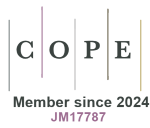Inflammation management in ophthalmology: new evidences for cataract surgery and beyond
DOI:
https://doi.org/10.33393/abtpn.2019.166Keywords:
Bronfenac, Cataract surgery, Inflammation management, NSAIDsAbstract
Inflammation represents the manifestation of the host's vascular and cellular response to tissue damage, hypersensitivity of the immune system or autoimmunity. As soon as the damage is detected, the mechanisms of localization and removal of foreign substances and damaged tissues are triggered. This response is amplified by the activation of inflammatory cells and by the production of chemical mediators derived from arachidonic acid, vasoactive substances and cytokines.
At the ocular level, among the different responses implemented by various inflammation mediators, the action of prostaglandins is mainly expressed in three ways: i) change of intraocular pressure; ii) induction of miosis; iii) increase of protein concentration in the aqueous humor.
Ocular inflammation may continue long after the cessation of the initial cause and may also lead to serious consequences, including permanent vision reduction. For this reason, it is essential to establish a correct and effective therapeutic strategy, which allows to control inflammation, the symptoms and the clinical signs associated with it.
This article therefore deals with therapeutic strategies to control inflammation, with a particular focus on the role of nonsteroidal anti-inflammatory drugs (NSAIDs) in cataract surgery.
References
- Ahuja M, Dhake AS, Sharma SK, Majumdar DK. Topical ocular delivery of NSAIDs. AAPS J 2008 Jun;10(2):229-41.
- Kim SJ, Flach AJ, Jampol LM. Nonsteroidal anti-inflammatory drugs in ophthalmology. Surv Ophthalmol 2010;55:108-33.
- Cho H, Mozayan A. New look at ocular inflammation control – Powerful and fast-acting twice-daily bromfenac for a novel standard in the treatment of inflammation. European Ophthalmic Review 2011;5(1):20-6.
- El-Harazi SM, Feldman RM. Control of intraocular inflammation associated with cataract surgery. Curr Opin Ophthalmol 2001;12(1):4-8.
- Masket S, Chang DF, Lane SS et al. American Academy of Ophthalmology. Cataract in the Adult Eye, Preferred Practice Pattern. San Francisco, CA: American Academy of Ophthalmology; 2006
- Baklayan GA, Patterson HM, Song CK et al. 24-hour evaluation of the ocular distribution of (14)C-labeled bromfenac following topical instillation into the eyes of New Zealand white rabbits. J Ocul Pharmacol Ther 2008;24(4):392-8.
- Hoffman RS, Braga-Mele R, Donaldson K et al. Cataract surgery and non-steroidal anti-inflammatory drugs. J Cataract Refract Surg 2016 Sep;42(9):1368-79.
- Walsh DA, Moran HW, Shamblee DA et al. Anti-inflammatory agents. Synthesis and pharmacological evaluation of 2-amino-3-benzoylphenylacetic acid and analogues. J Med Chem 1984;11:1379-88.
- Kida T, Kozai S, Takahashi H et al. Pharmacokinetics and efficacy of topically applied nonsteroidal anti-inflammatory drugs in retinochoroidal tissues in rabbits. PLoS ONE 2014;9(5):e96481.
- Cervantes-Coste G, Sánchez-Castro YG, Orozco-Carroll M et al. Inhibition of surgically induced miosis and prevention of postoperative macular edema with nepafenac. Clin Ophthalmol 2009;3:219-26.
- Donnenfeld ED, Holland EJ, Stewart RH et al. Bromfenac ophthalmic solution 0.09% (Xibrom) for postoperative ocular pain and inflammation. Ophthalmology 2007 Sep;114(9):1653-62.
- Stewart RH, Grillone LR, Shiffman ML et al. The systemic safety of bromfenac ophthalmic solution 0.09%. J Ocul Pharmacol Ther 2007 Dec;23(6):601-12.
- Chen H, Lin H, Chen W et al. Topical 0.1% bromfenac sodium for intraoperative miosis prevention and prostaglandin E2 inhibition in femtosecond laser-assisted cataract surgery. J Ocul Pharmacol Ther 2017 Apr;33(3):193-201.
- Diakonis VF, Kontadakis GA, Anagnostopoulos AG et al. Effects of short-term preoperative topical ketorolac on pupil diameter in eyes undergoing femtosecond laser-assisted capsulotomy. J Refract Surg 2017 Apr 1;33(4):230-4.
- Flesner P, Sander B, Henning V et al. Cataract surgery on diabetic patients. A prospective evaluation of risk factors and complications. Acta Ophthalmol Scand 2002 Feb;80(1):19-24.
- Kim SJ, Equi R, Bressler NM. Analysis of macular edema after cataract surgery in patients with diabetes using optical coherence tomography. Ophthalmology 2007 May;114(5):881-9.
- Ray S, D’Amico DJ. Pseudophakic cystoid macular edema. Semin Ophthalmol 2002 Sep-Dec;17(3-4):167-80.
- Nagpal M, Nagpal K, Nagpal PN. Postcataract cystoid macular edema. Ophthalmol Clin North Am 2001 Dec;14(4):651-9.
- Ursell PG, Spalton DJ, Whitcup SM, Nussenblatt RB. Cystoid macular edema after phacoemulsification: relationship to blood-aqueous barrier damage and visual acuity. J Cataract Refract Surg 1999 Nov;25(11):1492-7.
- Flach AJ. The incidence, pathogenesis and treatment of cystoid macular edema following cataract surgery. Trans Am Ophthalmol Soc 1998;96:557-634.
- Mentes J, Erakgun T, Afrashi F, Kerci G. Incidence of cystoid macular edema after uncomplicated phacoemulsification. Ophthalmologica 2003;Nov-Dec;217(6):408-12.
- Loewenstein A, Zur D. Postsurgical cystoid macular edema. Dev Ophthalmol 2010;47:148-59. doi: 10.1159/000320078. Epub 2010 Aug 10.
- Kessel L, Tendal B, Jørgensen KJ et al. Post-cataract prevention of inflammation and macular edema by steroid and nonsteroidal anti-inflammatory eye drops: a systematic review. Ophthalmology 2014 Oct;121(10):1915-24.
- Wielders LHP, Schouten JSAG, Winkens B et al. European multicenter trial of the prevention of cystoid macular edema after cataract surgery in nondiabetics: ESCRS PREMED study report 1. J Cataract Refract Surg 2018;44:429-39.
- Kim SJ, Schoenberger SD, Thorne JE et al. Topical nonsteroidal anti-inflammatory drugs and cataract surgery: a report by the American Academy of Ophthalmology. Ophthalmology 2015 Nov;122(11):2159-68
- Wielders LHP, Lambermont VA, Schouten JSAG et al. Prevention of cystoid macular edema after cataract surgery in nondiabetic and diabetic patients: a systematic review and meta-analysis. Am J Ophthalmol 2015;160:968-981.e33.
- Lim BX, Lim CHL, Lim DK et al. Prophylactic non-steroidal anti-inflammatory drugs for the prevention of macular oedema after cataract surgery. Cochrane Database Syst Rev 2016; issue 11. Article no. CD006683.
- Martone G, Corbo V, Caporossi O, Caporossi A. Survey Aiccer sulle modalità di effettuazione della terapia antinfiammatoria nella chirurgia della cataratta. La Voce Aiccer 3/2013. Fabiano Editore.
- Yellox (bromfenac). Riassunto delle Caratteristiche di Prodotto.
- Haripriya A, Chang DF. Intracameral antibiotics during cataract surgery: evidence and barriers. Curr Opin Ophthalmol 2018 Jan;29(1):33-39.
- Barry P, Cordovés L, Gardner S. ESCRS Guidelines for Prevention and Treatment of Endophthalmitis Following Cataract Surgery: Data, Dilemmas and Conclusions (2013). http://www.escrs.org/downloads/Endophthalmitis-Guidelines.pdf
- Miller D. Update on the epidemiology and antibiotic resistance of ocular infections. Middle East Afr J Ophthalmol 2017 Jan-Mar;24(1):30-42.
- Fernández-Rubio E, Urcelay JL, Cuesta-Rodriguez T. The antibiotic resistance pattern of conjunctival bacteria: a key for designing a cataract surgery prophylaxis. Eye (Lond). 2009 Jun;23(6):1321-8. doi: 10.1038/eye.2008.295. Epub 2008 Oct 3.









